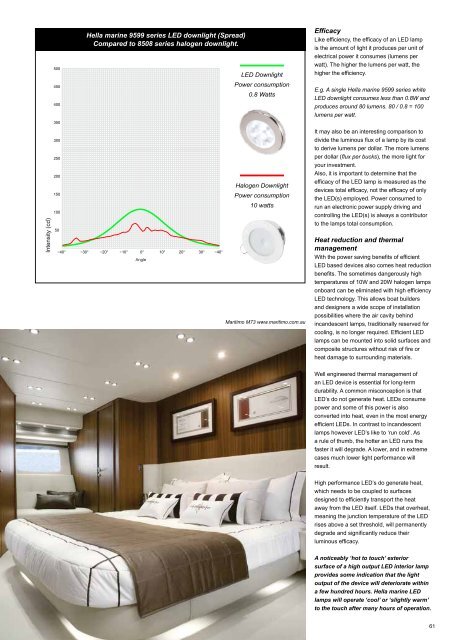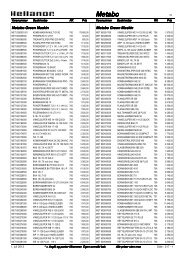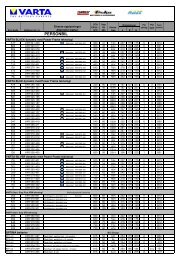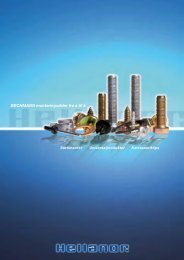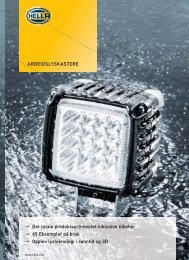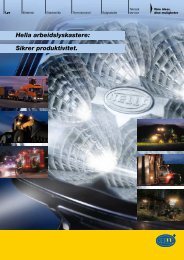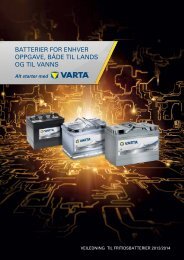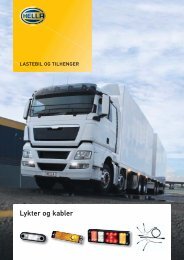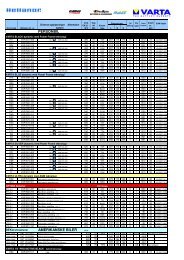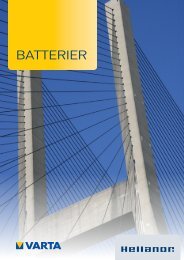LED Module 70 - Hellanor
LED Module 70 - Hellanor
LED Module 70 - Hellanor
- No tags were found...
You also want an ePaper? Increase the reach of your titles
YUMPU automatically turns print PDFs into web optimized ePapers that Google loves.
500Intensity (cd)Intensity (cd)45040050035045030040025035020030015025010020050150Intensity (cd)500450400350300250200150100−40°100−30° −20° −10° 0° 10° 20° 30° −40°50Angle50Hella marine 9599 series <strong>LED</strong> downlight (Spread)Compared to 8508 series halogen downlight.−40° −30° −20° −10° 0° 10° 20° 30° −40°Angle−40° −30° −20° −10° 0° 10° 20° 30° −40°Angle<strong>LED</strong> DownlightPower consumption0.8 WattsHalogen DownlightPower consumption10 wattsMaritimo M73 www.maritimo.com.auEfficacyLike efficiency, the efficacy of an <strong>LED</strong> lampis the amount of light it produces per unit ofelectrical power it consumes (lumens perwatt). The higher the lumens per watt, thehigher the efficiency.E.g. A single Hella marine 9599 series white<strong>LED</strong> downlight consumes less than 0.8W andproduces around 80 lumens. 80 / 0.8 = 100lumens per watt.It may also be an interesting comparison todivide the luminous flux of a lamp by its costto derive lumens per dollar. The more lumensper dollar (flux per bucks), the more light foryour investment.Also, it is important to determine that theefficacy of the <strong>LED</strong> lamp is measured as thedevices total efficacy, not the efficacy of onlythe <strong>LED</strong>(s) employed. Power consumed torun an electronic power supply driving andcontrolling the <strong>LED</strong>(s) is always a contributorto the lamps total consumption.Heat reduction and thermalmanagementWith the power saving benefits of efficient<strong>LED</strong> based devices also comes heat reductionbenefits. The sometimes dangerously hightemperatures of 10W and 20W halogen lampsonboard can be eliminated with high efficiency<strong>LED</strong> technology. This allows boat buildersand designers a wide scope of installationpossibilities where the air cavity behindincandescent lamps, traditionally reserved forcooling, is no longer required. Efficient <strong>LED</strong>lamps can be mounted into solid surfaces andcomposite structures without risk of fire orheat damage to surrounding materials.Well engineered thermal management ofan <strong>LED</strong> device is essential for long-termdurability. A common misconception is that<strong>LED</strong>’s do not generate heat. <strong>LED</strong>s consumepower and some of this power is alsoconverted into heat, even in the most energyefficient <strong>LED</strong>s. In contrast to incandescentlamps however <strong>LED</strong>’s like to ‘run cold’. Asa rule of thumb, the hotter an <strong>LED</strong> runs thefaster it will degrade. A lower, and in extremecases much lower light performance willresult.High performance <strong>LED</strong>’s do generate heat,which needs to be coupled to surfacesdesigned to efficiently transport the heataway from the <strong>LED</strong> itself. <strong>LED</strong>s that overheat,meaning the junction temperature of the <strong>LED</strong>rises above a set threshold, will permanentlydegrade and significantly reduce theirluminous efficacy.A noticeably ‘hot to touch’ exteriorsurface of a high output <strong>LED</strong> interior lampprovides some indication that the lightoutput of the device will deteriorate withina few hundred hours. Hella marine <strong>LED</strong>lamps will operate ‘cool’ or ‘slightly warm’to the touch after many hours of operation.61


